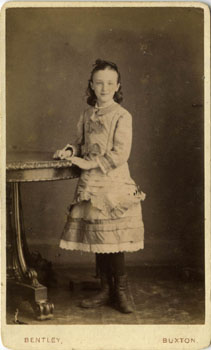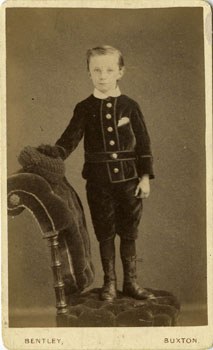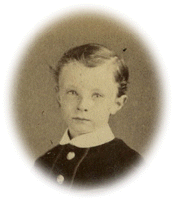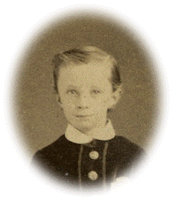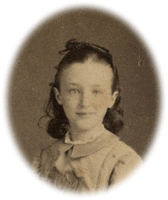 Kevin asked "Did the photographers go out to private houses and take alfresco pictures like this? And would they bother with the servants? It seems so by the evidence but I am surprised. I don’t know if the address on the Postcard fits to the picture."
Kevin asked "Did the photographers go out to private houses and take alfresco pictures like this? And would they bother with the servants? It seems so by the evidence but I am surprised. I don’t know if the address on the Postcard fits to the picture."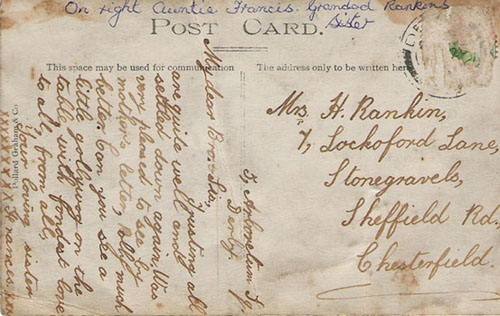
My first task was to estimate a date for the photograph. It is unfortunate that the stamp has been ripped off, and that the postmark is largely obliterated. There is enough of the latter still visible to confirm that it was indeed posted in Derby, and the remnant of the stamp still stuck to the card is, I believe, enough to identify it as one of two King George VI green half-penny definitive stamps issued in 1911 and 1912. They were replaced by another issue later in 1912, suggesting that, if my identification is correct, the card may have been posted in 1911-1912 or shortly after.



The clothes worn by Frances and her companion appear to be appropriate for that approximate period. It's perhaps worth illustrating the development of domestic uniforms over the decades, from the 1880s until the 1940s, with the following selection of images from my own collection and from others on the web. Hover your mouse over an image for the approximate date, click on it to see the original source.












I found an interesting discussion of the lives of Victorian domestic servants on Peter Ward's web pages. Housemaids appear to have had slightly different uniforms from other house servants, such as the housekeeper, ladies' maids, cooks, kitchen maids and scullery maids.
The reverse of the post card shows that it was produced by the studio of Pollard Graham, who operated a studio in Derby for several decades from the mid-1880s until the 1930s.
I checked the 1912 issue of Kelly's Trade Directory for Derbyshire, probably compiled in late 1911, and discovered that the occupant of 5 Arboretum Square, Derby - the home address given by Frances - was none other than the photographer Pollard Graham himself! I think this deals directly with your question about whether photographers would normally have gone to private residences to take portraits of servants. The answer is, it probably depended on the circumstances.

I have a photograph of my great-grandparents and my grandfather (shown above), taken in about 1894 by a Derby studio photographer (in spite of the card mount stating Leeds!), almost certainly in their garden in St James' Street, Normanton. However, they could perhaps afford it. The Arboretum Square photo may well have been done for free by Pollard Graham for his employees. A nice gesture. We'll have to wait a few years until the 1911 Census is released, but when it is, we may well find this confirms that Frances and her friend were working for Pollard Graham. Perhaps we may also be able to identify her companion.








